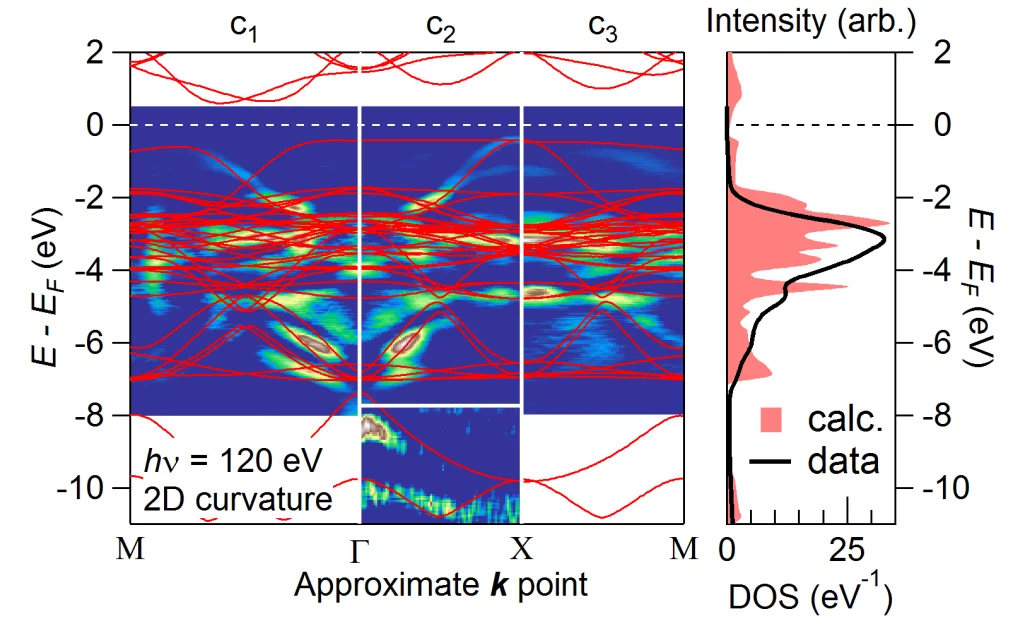Many high-temperature superconductors are derived from slight chemical modifications to insulators or “bad metals”. In recent decades, physicists have been trying to answer the questions of how a superconductor can emerge from an insulator, and how proximity to one electronic phase may strongly influence the other. Now, researchers have overcome a number of challenges in order to employ an advanced probe in the study of an unusual material, barium bismuth oxide (BaBiO3) – an insulating parent compound of a family of high-temperature superconductors known since the late 80s. The experimental technique, angle-resolved photoemission spectroscopy, gives a detailed snapshot of the electrons in a solid, but it’s sensitive to the surface quality of the samples. In order to realize the experiments, the researchers grew and studied thin films of the material inside a vacuum chamber. By combining the data with electronic structure calculations, the study revealed that the insulating behavior stems from an unusual arrangement of the charge within the material: The oxygen sites in barium bismuth oxide have a lower electron density compared to most oxides, and the charge around the sites is asymmetrically distributed. This peculiar electron arrangement is coupled with strong distortions of the crystal lattice. The findings not only give new insights into the interactions at play in bismuth oxides, but also some other families of unconventional insulators.
Contact
Dr. Nicholas PlumbBeamline Scientist (SIS), Swiss Light Source
Paul Scherrer Institut
Telephone: +41 56 310 30 87
E-mail: nicholas.plumb@psi.ch
Original Publication
Momentum-Resolved Electronic Structure of the High-Tc Superconductor Parent Compound BaBiO3N. C. Plumb, D. J. Gawryluk, Y. Wang, Z. Ristić, J. Park, B. Q. Lv, Z. Wang, C. E. Matt, N. Xu, T. Shang, K. Conder, J. Mesot, S. Johnston, M. Shi, and M. Radović
Phys. Rev. Lett. 117, 037002 (2016)
DOI: 10.1103/PhysRevLett.117.037002
